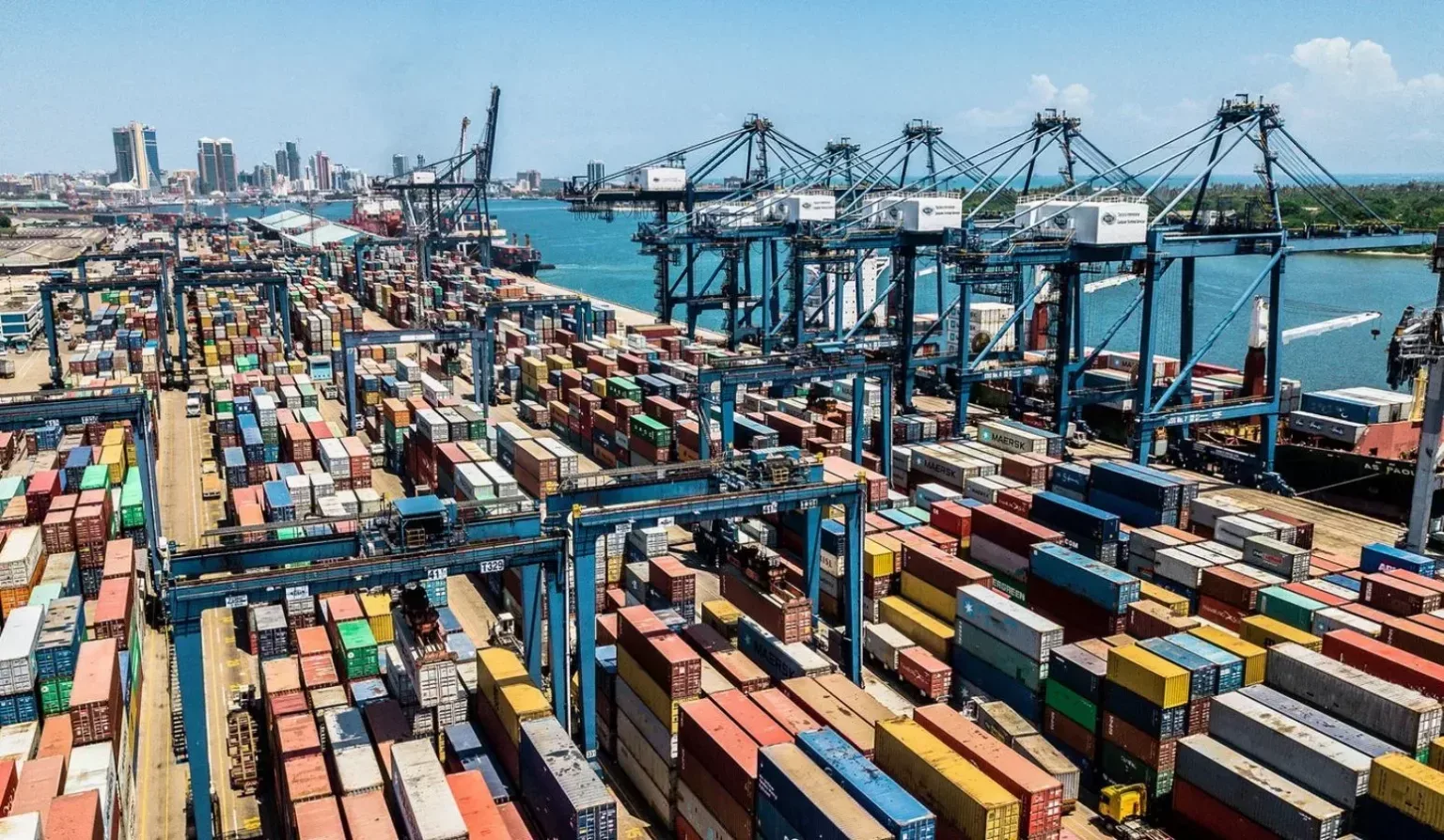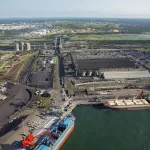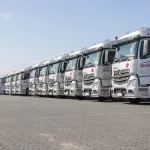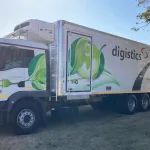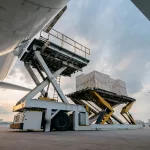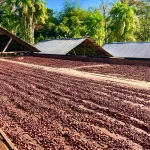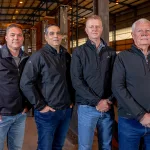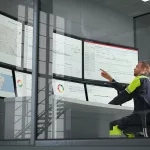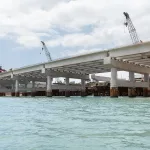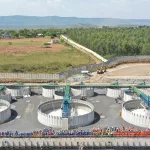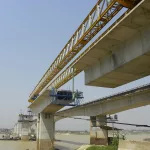Tanzania International Container Terminal Services (TICTS) continues to enhance its offering to importers and exporters passing through the busy hub of Dar es Salaam. CEO Jared Zerbe fills us in.
INTRODUCTION
Tanzania, one of Africa’s most beautiful countries, has enjoyed a decade of solid growth and is a nation looking forwards.
The election of John Pombe Magufuli as its fifth president in October 2015 heralded a period of renewed focus on tackling corruption, enhancing public administration and managing public resources for improved social outcomes, an agenda which has produced some positive results.
For instance, poverty rates continue to fall, the 26.8 percent figure recorded in 2016 down from 34.4 percent in 2007, while public spending as a proportion of GDP is set to rise to 9.1 percent for 2018/19, a marked increase on the 5.5 percent seen in the previous period.
Investment geared towards making Tanzania more business-friendly is also bearing fruit.
According to the World Bank, the East African country ranks solidly in the middle of Sub-Saharan nations when it comes to the ease of doing business, above the likes of economic powerhouse Nigeria.
Drill deeper into the findings, and Tanzania stands out when it comes to processes surrounding imports and exports, an important factor in the overall ease of doing business ranking.
For example, implementing the Tanzania Customs Integrated System (TANCIS), an online portal for downloading and processing customs documents, has reduced the time it takes to import and export from the country and land-linked countries, a move which has made it the fastest subcontinent destination in the area of border compliance (for imports).
THE GATEWAY TO EAST, CENTRAL AND SOUTHERN AFRICA
Central to Tanzania’s appeal as an importing and exporting hub is the Port of Dar es Salaam.
A prominent gateway in and out of the continent, its profile has risen markedly over recent years, with companies such as Tanzania International Container Terminal Services (TICTS) playing a lead role in attracting greater volumes of traffic.
“Dar es Salaam is the major commercial port for local and transit import and export activity in East Africa, as more than 90 percent of the containerised traffic going in and out of the country is handled here,” comments Jared Zerbe, CEO of TICTS.
“In addition, it is geographically located in a very strategic position and provides a gateway to six of the land-linked countries in East, South and Central Africa. This is shown in the statistics, as some 40 percent of the cargo handled at Dar is for transit countries.”
For Zerbe, who has served as CEO for around three years, the ongoing journey of TICTS instils a tremendous sense of pride and passion for a country he has fallen in love with.
“I had spent a lot of time in Tanzania previously on port investment projects and I really started to admire the country,” he continues, speaking to Africa Outlook 18 months on from our last conversation. “It’s such a beautiful place with amazing beaches and other outdoor wonders.
“It has been an inspiring journey so far. We have completely restructured the company and improved so many areas, especially looking at process mapping for all our departments and operations to reduce bottlenecks and improve efficiencies, as well as overall professionalism. I am truly proud of the team here.”
Indeed, the 2017/18 period saw overall container throughput increase by an impressive 18 percent, while 2018/19 (still ongoing) has witnessed a four percent growth.
Such upticks in business Zerbe attributes not only to the increased operational efficiency, but also cooperation from the government, activity which has not gone unnoticed by the likes of the World Bank, which notes upgrades to the Port of Dar es Saleem in its Ease of Doing Business survey.
As the largest specialised container terminal in Tanzania, TICTS manages the container handling activities at berths eight, nine, 10 and 11 and the inland container depot at Kurasini, handling more than five million TEUs since the turn of the millennium.
“We are growing along with the port, which is currently in the middle of the maritime gateway expansion project,” adds Zerbe.
“This involves the ongoing rehabilitation of berths one to seven, upgrades reflecting the future vision for the container terminal which is to accommodate Post Panamax vessels. The ongoing expansion is also aligning with TICTS operations, especially with capital dredging which means heavy drafted vessels above 10.5 metres can also be handled without restrictions.”
POWERING PROGRESS
Such TICTS operations have involved implementation of technology to create a more efficient experience for customers.
For instance, it is integrating a mobile application made by Hutchinson Ports called ubi, extracted from the Latin word ubique, which translates to everywhere, meaning it will be available in all Hutchison Ports terminals around the world.
The technology incorporates features that will enable carriers, service providers and yard operations to have greater visibility, improved efficiency, enhanced decision making and further automate the myriad processes involved in terminal, container storage and hinterland operations.
Ubi will be able to process information enquiries for quayside operations, landside operations, gateway terminals for truckers, consignees and shippers. Truckers will know when their box is ready for collection and they can pay using the app, a process which will save time from queuing to physically pay at on-site billing offices.
The new app will also monitor vessel productivity and include a truck appointment system to streamline gate operations, reducing dwell time for drivers.
On the human side of the business, the appointment of a new Head of Human Resources and Administration has provided another series of benefits.
Zerbe comments: “There has been massive impact, especially in the way we have implemented performance management within the company – we have increased engagement and dialogue between management and staff as well as between supervisors and their teams.
“This has resulted in a better rewards process with good performance and increased significantly the professionalism of our team.”
Over the next year, Zerbe plans to combine these technological and staffing breakthroughs with further expansion of facilities and capabilities, starting with the removal of old TPA decommissioned quay cranes to create additional berth length at quayside.
“I want us to become a one-stop shop where all the documentation can be processed prior to accepting a truck’s entry to the terminal,” he adds. “This will help with customer retention, and continued process mapping of departments in the company will improve overall performance and efficiencies.
“I am also confident about the future of Tanzania. The country’s aim is to reach middle class economy status by 2025, and the port here at Dar es Salaam is an essential element in achieving this goal and aligning with the nation’s industrialisation strategy.”

